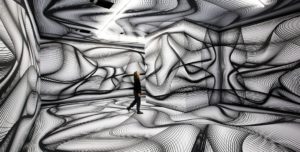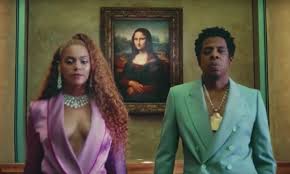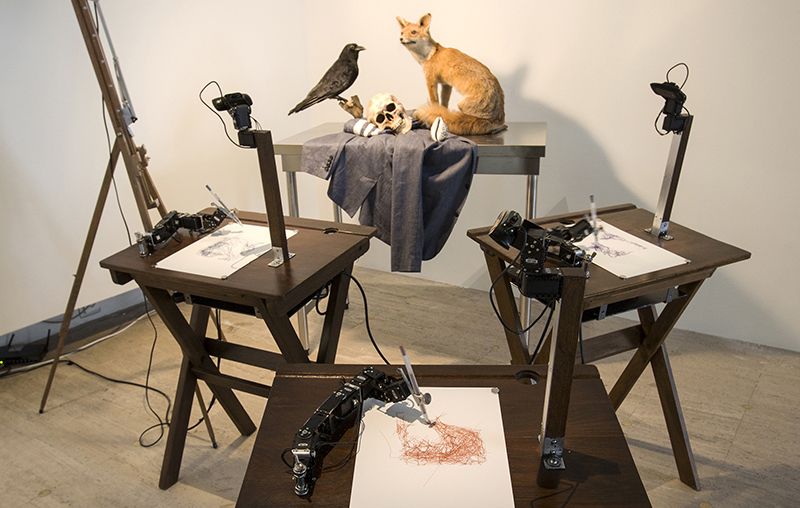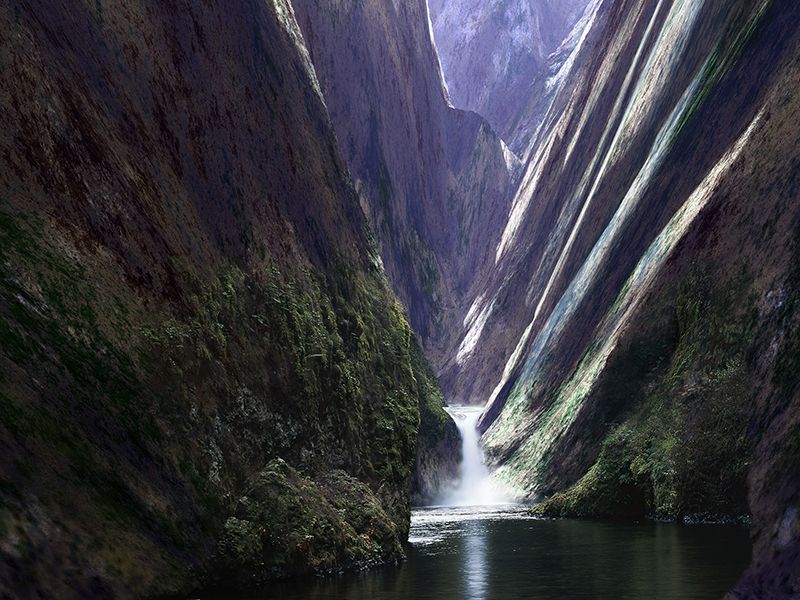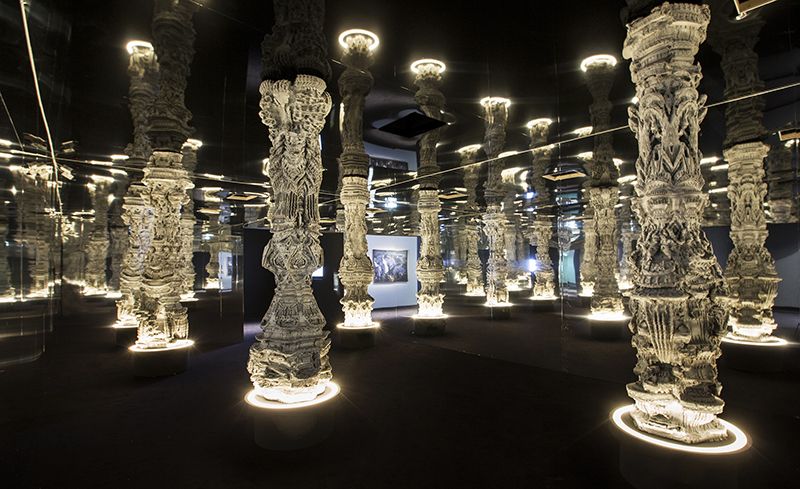one of the computer-assisted art pieces in the “Artists and Robots” exhibition
at the Grand Palais, Paris, which runs until 9 July 2018
25 June 2018 (Paris, France) – You don’t always need to go to a museum or art gallery to see a work of art. In fact, one thing I have realized working and living in Paris (where I spend a good portion of my time) is that it a veritable open-air work of art in itself. Art is everywhere: in gardens, on quaysides, in tram stations and on walls around the city. Add in the wealth of Paris museums and galleries … well, it is tough to keep up.
TRIVIA NOTE: two weeks ago Beyoncé and husband Jay-Z released their collaboration album “Everything Is Love”. The music video for one of the songs was shot in the empty Louvre Museum. I am a member of the Société des Amis du Louvre (Friends of the Louvre) and I can tell you they paid a significant sum for the privilege.
Both of them standing in a museum that is both filled with and symbolic of enormous wealth isn’t itself a radical act. Even posing in front of major works of art. It’s been done before. But their use of the setting to expose classical art’s overwhelming “whiteness” in order to show a certain representation — that was revolutionary.
I am somewhat fortunate because my Paris office assistant tracks my Paris museum memberships and keeps me alerted to exhibits she thinks I’d find of interest. The “Artists and Robots” exhibition I would have missed. Attending the exhibit had me reexamine what I think I “see” or – more broadly – how I sense the world, and hence what I think is “art”.
The exhibition showcases robots and their output in three (roughly) chronological sections. The first recounts how, starting in the 1950s, visionary artists such as Jean Tinguely and Nicolas Schöffer built robots — to begin with, no more than collections of mobile parts driven by motors — to create kinetic art.
NOTE: I have written about Schöffer before. He was a Hungarian-born French cybernetic artist who resided in Paris from 1936 until his death in Montmartre in 1992. He built his artworks on cybernetic theories of feedback interactivity primarily based on the ideas of Norbert Wiener. Yes – Norbert Wiener. The same chap I wrote about earlier this year in my series on Soviet “cyber power”. The Russian interest in kibernetika, or “cybernetics”, was heavily informed by the writings of Wiener who first coined the term. Another example of how my AI – art – cyber – technology worlds often converge.
The second tracks that impulse forward from the digital revolution, starting in the 1970s. And the third is (optimistically?) entitled The robot emancipates itself, and explores their present status and looks to the future.
When robots were all jointed arms and motors, they executed an artist’s vision channelled by their own capacities as machines. Modern French artist Patrick Tresset’s ironic spin on this relationship features in the first section of the show. In the installation Human Study #2, three sets of robot arms and cameras – the ‘hand’ and ‘eye’ – repeatedly draw a set of objects including a stuffed fox and a human skull. They are programmed to copy both the objects and Tresset’s drawing technique, while introducing small variations that he characterizes as artistic, expressive and obsessional. It’s through such serendipitous additions and mistakes, the artist seems to suggest, that the greats became great.
Above: In Patrick Tresset’s Human Study #2, three robotic systems draw a still life.
The digital revolution ushered in software and algorithms as artists’ tools or assistants, and the technical possibilities exploded. We see this in stunning works in this second section, from conceptual artist Joan Fontcuberta’s self-described “hallucinatory” landscapes to labyrinthine wallpaper from multimedia whizz Peter Kogler (that’s the opening graphic at the top of this post; it covers an entire room, so that we seem to be enclosed in an optical illusion).
But the technical sophistication in the works of this section seem only to accentuate their soullessness, and never more so than when they show up the fallibility of human perception. In the 2003–04 paintings from his Orogenesis series, for example, Fontcuberta takes algorithms that create 3D landscapes from 2D map coordinates, and forces them to re-interpret the landscape paintings of artists such as J. M. W. Turner and Paul Cézanne. The results are highly naturalistic, but they reminded me of the French writer Georges Perec (whom I will come back to in a few weeks in a post about the progress of French artificial intelligence) who said that once the human element is banished from a place, it becomes a non-place.
Likewise Michael Hansmeyer’s 2017 Astana Columns (directly below). These architectural forms, created by an algorithm that applies evolutionary principles to repeatedly subdivide a Doric column, were assembled from laser-cut cardboard and other materials.
They provoke awe through their sheer complexity, not unlike that of a termite mound – and perhaps with the same “automaticacy”.
But as you work your way through the exhibit, it dawns on you. The robot has not quite emancipated itself. Pascal Haudressy’s 2009 animation Brain, for example, evolves thanks to glitches the artist introduced into the governing algorithm; these force the computer to continuously recalculate the coordinates of each pixel. Ultimately, however, it is less impressive than animations of the actual evolution of the human brain. Although artificial intelligence has advanced by leaps and bounds since the 1950s, artificial imagination is still in the starting blocks. As the curators of this exhibit, Laurence Bertrand Dorléac and Jérôme Neutres, suggest in an explanatory video before you start the exhibit, these are artists’ robots rather than robot artists. But if the show doesn’t tell you what art is, it does venture into fascinating new territory to tell you what it’s not: random copying errors in the AI might be necessary, but they are also insufficient to create “art”, at least in my eye.
That said, perhaps robot imaginations have already liberated themselves outside the confines of human artists’ studios, and their art is radically different from ours; so different that we don’t recognize it when we see it. I can’t wait for the first exhibition curated by robots – but that’s assuming it’s advertised to non-robots.
